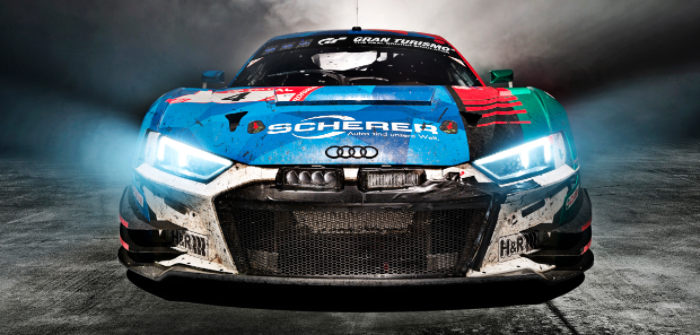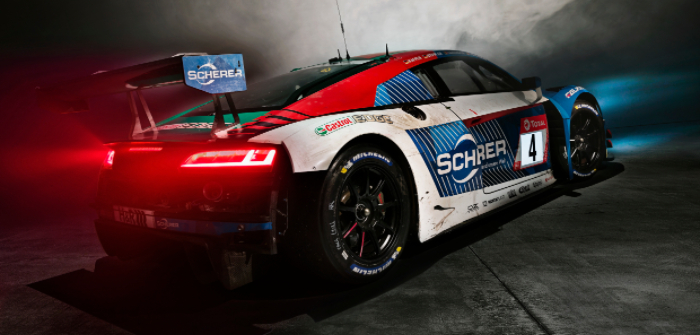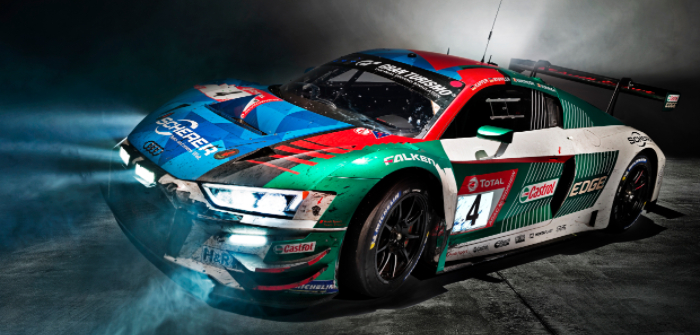The race car with which Audi Sport customer racing won the 24 Hours of Nürburgring for the fifth time has an unusual history.
Almost exactly two years before its victory in Germany, the Audi R8 LMS with chassis number AS4SAFGT201700089 started its maiden race, round three of the Blancpain GT Series Endurance Cup.
To date, the car has done three tests and contested 12convert km races with four different teams, including the 24 Hours of Spa twice, the 24 Hours of Nürburgring twice and the California 8 Hours at Laguna Seca twice. By the time the last checkered flag fell, this Audi R8 LMS had covered a total distance of 29,836km (18,540 miles) at qualifying and racing speed.
The production-based GT3 race car shares 50% of its components with the production model. The ASF multi-material chassis of aluminum and CFRP is produced at the same manufacturing facility as the production model, at Böllinger Höfe, part of Audi’s Neckarsulm site in Germany.
The quality of the lightweight design means that the car tips the scales at 1,235kg (2,722 lb), but has to weigh 1,310kg in the Nürburgring 24 Hours due to the regulations.
The V10 engine is even almost completely production-based. With service intervals of 10,000km (6,200 miles) and rebuild intervals of 20,000km, the customer racing car makes economical operation possible. The power-plant in the winning car had already run for 5,000km before the event at the Nürburgring began.
The rating of the race car, which serves to put all competitors on a similar lap-time level, results in a variation: at the Nürburgring the V10 engine produces 487hp on account of the mandatory air restrictor, while the production model delivers 27% more output at 620hp. Thus, in the SP9 class engine output ranking, the Audi R8 LMS placed last-but-one spot.
Despite tough conditions, Audi – unlike other manufacturers – made only minor modifications to adapt the race car to the Nordschleife. The prescribed ground clearance of 70mm means that the GT3 sports car lies about one centimeter higher above the tarmac than on other race tracks. As a result, as well as due to the 100mm slimmer rear-wing prescribed by the regulations, aerodynamic downforce is reduced.
Since 2019, a new aero package has enhanced handling stability once more. In addition, improvements have been made to increase the race car’s durability and consistency even further.
So, what will happen to the race car of the winners now? Audi Sport will sell the original winning car to an interested partner, just like the brand did when victory was clinched two years ago.




